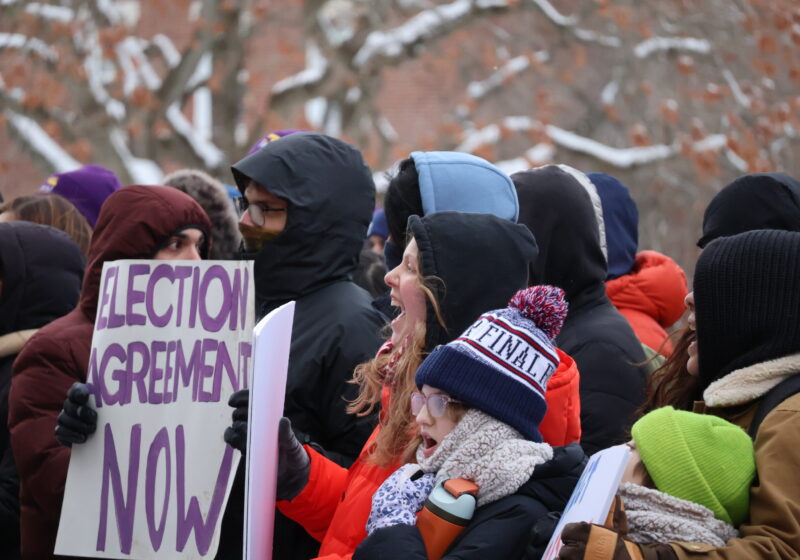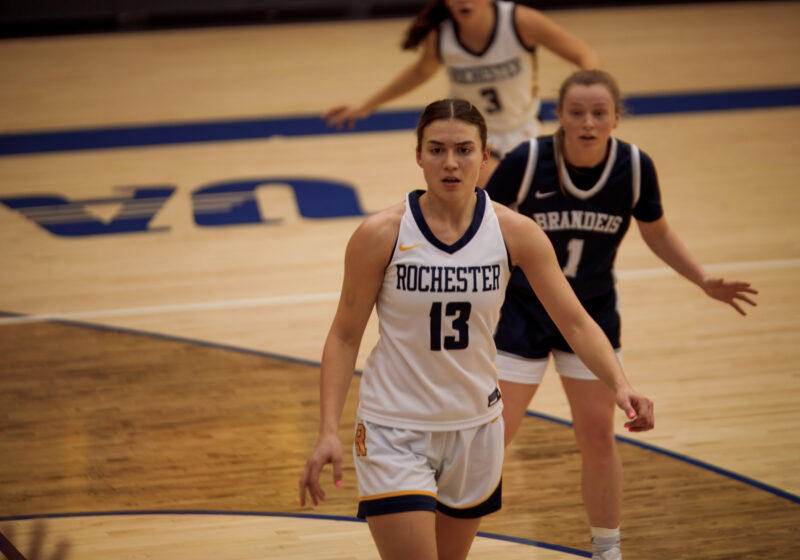Is one person’s child more important than another’s?
That’s what investigative journalist, staff writer for the “New York Times Magazine,” and MacArthur Genius Nikole Hannah-Jones asked last Thursday night at Third Presbyterian Church.
Hundreds of local community members — UR students included — gathered for a conversation on how Rochester’s education system can be restructured, in Hannah-Jones’ view, to work for students of all races. The event was hosted by a local advocacy group, Great Schools For All.
“I understand Rochester’s not number one in a lot of things, but apparently, y’all do a pretty good job of segregation,” Hannah-Jones said.
Going off of a report by EdBuild — a nonprofit organization focused on public school funding — Hannah-Jones said that Rochester is ranked in the top 50 school districts in the country for district border segregation. This means the disparity between poverty rates of neighboring school districts is among the worst in the entire country.
For example, Rochester City School District, which ranks 22nd on that list, has an enrollment of 30,295 and a poverty rate of 43 percent, while less than 20 minutes away, Penfield Central School District has an enrollment of 4,475 and a poverty rate of 5 percent.
This problem, Hannah-Jones said, is not just seen in Rochester, but throughout the country — especially in blue states and blue cities, areas that are traditionally liberal.
“I’m not ever speaking to conservatives when I give talks,” Hannah-Jones said. “I’m speaking to progressive white people who say they believe in equality and integration, but don’t act that way. Those are the people that I’m trying to convince.”
To understand why America continues to struggle with the fundamental issue of inequality years after the abolishment of slavery, Hannah-Jones urged everyone to understand their history and the history of one of the earliest education reform movements, Horace Mann’s Common School Movement.
The movement’s purpose was to create a uniform system of public education, commonly known today as public schools. But, according to Hannah-Jones, that system wasn’t for everyone. To get white people in Massachusetts to agree to common schools, Mann had to exclude black children.
“We were under the belief that if we sacrifice black children for now, eventually black children will be brought into the fold,” Hannah-Jones said. “And here we are in 2017, still fighting to get an equal education for black children in this country.”
The solution — and subject of many of Hannah-Jones’ articles and new book “Living Apart: How the Government Betrayed a Landmark Civil Rights Law” — is integration.
The integration of schools results in the dissolution of the two philosophies of education Jones has diagnosed America with — the one for democracy, the education that most white Americans have received, and the one for oppression, the education that black, native, and latino children have received.
Hannah-Jones showed the audience a graph of standardized test scores. On that graph were two lines — one that represented the reading ability of white children and one that represented the reading ability of black children. The gap between those lines, as Hannah-Jones pointed out, was the narrowest in 1988, the peak of desegregation. And as schools have become resegregated over time, the gap, she said, has never been as narrow.
“It is not that integration makes black children smart, there is nothing about sitting next to a white child that makes a black child smarter, but what it does guarantee is that that black child gets what the white child gets,” Hannah-Jones said.
Drawing on her own experience of sending her child to a school with a 95 percent poverty rate to exert what little power she had over changing the public school system, Hannah-Jones called on the crowd to reconsider sending their children to the best schools possible, at the expense of a local public school.
“How can we look at ourselves everyday and say these schools are not good enough for our kids, but they’re good enough for someone else’s?” Hannah-Jones asked.
Following her talk, lines snaked throughout the pews as well-wishers lined up to thank Hannah-Jones for her talk.



